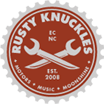We have been professing our love about
Spotify for a few months now but if you have been interested in checking out the service and wondering just how they operate, read the article below.The amount of choices on the service leave us scratching out brain thinkin' on new songs to listen to and its with the plethora of offerings that we find the most enjoyment. Hell if you want to dive into Chaupin or Bach or move into country or metal, its all a few clicks away.
Ken Parks, head of Spotify's New York office: "With a
streaming service like Spotify that gives you access to everything in
the world instantaneously, those distinctions between ownership and
access tend to disappear."
If you've ever tried listening to music on a web site, you've
probably had the experience of waiting ... and waiting ... for a song to
start. The cloud music service Spotify thinks it's found a way around
to get music to your computer faster; employing some of the same
technology the music industry has been fighting against for years.
One
of the first things you notice about Spotify is how quickly it starts
playing the song you want to hear — even if it's not already stored on
your computer. There's no wait for buffering or downloading. Spotify
feels, in a word, instant.
John Pavley,
Spotify's VP of engineering, says, "We're set up so that we can deliver
the music with a meantime average of 285 milliseconds. Which is, like,
super-fast."
That number he mentioned —
285 milliseconds — may sound arbitrary. But Charlie Hellman, director
of product development for Spotify, says it's not. According to Hellman,
"The human perception of instant — if you hit a button that's tangible
in the world — is something like 250 milliseconds. By bringing the time
to play on our service down to about 285 milliseconds, the perception is
that you already have the file on your computer — that it's instant."
Spotify
launched in Europe three years ago, and in the U.S. this past August.
The basic idea behind the company isn't brand new. Music streaming
services — sites where you pay a monthly fee for access to zillions of
songs — have been around for a decade. But they've never broken through
to a mass market.
Eliot Van Buskirk, who writes about music technology for
Wired and
Evolver.fm,
says Spotify might. "To an extent, Spotify is basically like other
services we've had," Van Buskirk says. "But the difference is, it has, I
think, reduced the friction for people trying this stuff out. And that
was one of the first things I noticed: it's just impossibly fast."
Spotify
hopes to use that speed to lure consumers to the free,
advertising-supported version of its service — then convince them to pay
a monthly fee to use Spotify on their phones and mobile devices. Its
target audience is the millions of people who continue to download music
for free from peer-to-peer networks.
"The
problem with the environment when Spotify launched the service over
three years ago is that the illegal alternatives were better, simply
better than the legal ones," says Ken Parks, head of Spotify's New York
office.
Parks says Spotify is trying to
build a service in which creators get paid, but the user's experience
doesn't suffer. "With a streaming service like Spotify that gives you
access to everything in the world instantaneously," says Parks, "those
distinctions between ownership and access tend to disappear."
To
make this happen, Spotify borrows a few tricks from the peer-to-peer
networks. Instead of downloading a single song file from its own server
to you, Spotify searches for copies of the song wherever it can find
them, including the computers of other Spotify users.
"Behind
the scenes while the music is playing, we're grabbing it from wherever
we can," says Pavley. "You can't interact with the P2P network, it's
just a little facility that we use to move things along very quickly."
Before
he came to Spotify Pavley was actually VP of engineering for Limewire, a
popular peer-to-peer network. Unlike the P2Ps it's trying to replace,
Spotify actually has licensing deals with the major record labels. And
in September the company announced a deal with Facebook. Van Buskirk
says that allows Facebook users to automatically share the songs they're
listening to via Spotify.
"It gets
closer and closer to that original Napster feeling," he says. "'What do
my friends have? Can I have that?' And now it's like, 'Yes, you can.'
And there's a whole mechanism for finding out what they have that you're
already using anyway."
But Van Buskirk
says Spotify's deals with the major record labels didn't come cheap.
Spotify says it has more than 2 million paying users worldwide —
although the company declined to discuss how many of them are in the
U.S. Van Buskirk, and others, think the company will have to sign up a
lot more if it's going to make a profit.


























